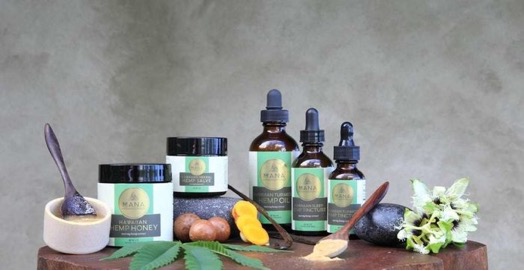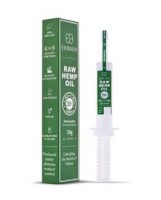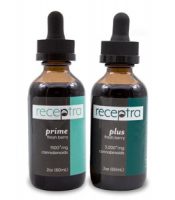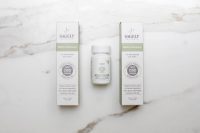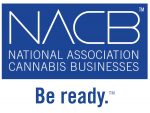Editor’s Note: This article contains the first four common labeling mistakes that businesses can make. Click here to view the next four common labeling mistakes.
Whether you’re a small business owner or a production manager of a large manufacturer, if you’ve ever experienced problems with your product labels you know it can quickly turn into a serious issue until that problem is resolved. From the time it’s applied to your product all the way to the POS (Point of Sale), labels always seem to be the least significant part of the production process- until something goes wrong. And when it does go wrong, it can create major branding issues and cost your company tens of thousands of dollars due to hefty supply chain late penalties and/or even government fines.
This article aims to provide insight as to how a company like Label Solutions Inc. helps businesses and manufacturers create new labels for their products as well as what to look for should you experience label failure at your retail locations. Topics discussed in this article do not cover all possible issues, but these common mistakes will hopefully help you better understand how creating a product label works, and how to possibly prevent your own problems in the future.
Mistake #1: Not Understanding the Importance Between the “Construction” Versus the “Artwork & Compliance” of the Label
This may seem like common sense, but it is often overlooked. Especially when dealing with fast-track projects.
Construction of the Label is the material selected and production process to produce the label. When creating a new label from the ground up, it is important to factor in how your product will be produced, necessary shipping and supply chain needs, how it is stored in inventory and how it will be presented at the POS. Understanding what environments your product will be exposed to throughout its life cycle will give you an advantage when approving substrate material, inks, and the strength of adhesive that might be necessary for your application.
The Artwork & Compliance of the Label refers to the overall design of the label, artwork, customer messaging, bar codes and regulatory requirements you need to follow in order to avoid serious government fines that might relate to your industry (Referring to agencies such as OSHA, DOT, and the FDA).In most cases the construction of the label does not apply to the compliance of the label.
Most label providers do not have the in-house expertise to offer compliance assistance. Although it is still the manufacturer who is liable for all final artwork approvals on their product, label providers that do offer advisory services can help update label content when regulatory changes are enacted. This “safety net” can save your company from extra production costs and, potentially, excessive legal time and material costs. In short, you should always review final label artwork approvals with your compliance team and/or legal expert, but it never hurts to have a “safety net” to help eliminate unnecessary orders or production delays.
In most cases the construction of the label does not apply to the compliance of the label. An exception to this statement would be industries such as the electronics industry that use UL (Underwriter Laboratories) labels that must meet UL specifications and be produced under recognized UL files. In other words, the compliance of a UL label is the construction of the label.
Best Method Approach: An excellent example of companies that understand the difference between the Construction vs. Artwork & Compliance of the label would be the compressed gas industry. Gas suppliers and distributors require long term regulatory compliant labels on their cylinders and micro-bulk tanks. These gas tanks are used in a wide variety of industries such as for manufacturing, welding, medical procedures, and specialty gas mixes for the micro-electronics industry.
The compressed gas industry requires that their labels follow strict, up-to-date OHSA and DOT compliance requirements. As for the construction of the label, it is common practice that the label remains legible on the cylinder for an average of five years. The 5-year duration is due to the millions of tanks that are in circulation throughout the US and Canada. What’s more, each label is produced to adhere to the cylinder’s metal surface during extreme outdoor weather conditions such as fluctuating temperatures, freezing rain, high winds, and direct sunlight year-round.
Mistake #2: Applying Labels Incorrectly to Your Products
Whether the label is applied to the product surface by hand or automatically with a label applicator, the label itself may not be applied level or evenly. Besides this being a major branding issue, this could also affect how the bar codes are scanned and could eventually impact your delivery times while trying to correct a batch.
Best Method Approach: There are construction alternatives that you can choose from to potentially reduce the impact of incorrect label application. For example, products with certain label adhesives allow your production team to reposition the label within a few minutes before the tack completely sets to the surface. The type of surface (cardboard, metal, plastic, glass, etc.) and the type of adhesive will determine how much time your production team will have before the tack sets.
The best practice is to apply labels prior to filling the bottles and cans as opposed to filling first and then applying the label in your production line.A good example of this best practice can be seen in the beverage market. Whether the client produces a uniquely crafted beer, or a rare ingredient infused into a new health drink, labels that are auto-applied to bottles and cans will sometimes experience equipment tension issues that need to be recalibrated. Once labels are applied off-alignment, a delayed tack setting can allow the label to be quickly repositioned by hand when needed. The best practice is to apply labels prior to filling the bottles and cans as opposed to filling first and then applying the label in your production line. The reason, excess spillage from filling can interfere with most adhesives.
This same repositionable adhesive is excellent to keep in mind for large equipment production assembly lines that apply prime (branding) labels and warning labels by hand. Even with large wide-format labels, the adhesive tack can be formulated so your employees have a few minutes to adjust, straighten, and smooth away trapped air bubbles once it has been placed on the surface. Knowing you have this option can help reduce label inventory waste, additional production material wastes and avoid delaying production time. More importantly, this option keeps your brand and your warning/instructional labels looking fresh.
Mistake #3: Not Sharing Your Production Run Schedules with Your Label ProviderSupply chain management (SCM) models are excellent examples of the best approach.
Some of Label Solutions’ largest accounts have the most efficient real-time tracking supply chain models in North America, but even they cannot avoid sudden increased orders for their products stemming from high customer demand or similar issues. It is a good problem to have, but it is a problem, nonetheless. Manufacturers utilize supply chain management tools to notify their suppliers of their monthly order forecasts, which in turn helps suppliers manage their materials and deliveries more efficiently.
On the other side of the spectrum, when small businesses share their production schedules with a supplier it means that both parties (the manufacturer and label provider) understand when to expect higher or lower order quantities each month. Label providers should back date their label production schedules, so they have the materials available to handle your busier months while ensuring on-time deliveries.
Best Method Approach: Supply chain management (SCM) models are excellent examples of the best approach. Although SCM’s are designed for scalability and real-time tracking, the benefit to you also helps your label supplier. For example, our large retail and industrial manufacturing clients notify the Label Solutions team to produce their labels according to their Supply Chain portal demand schedules. This, in turn, allows label suppliers to allocate production time and materials more efficiently for your last-minute rush orders.
Smaller companies can take a much more simplified approach (without the SCM tracking) to help their suppliers manage their orders – even if they do not use supply chain management. A simple Excel report of production runs over a 12-month time frame is ideal. If your label provider does not already practice this or similar methodology, it might be time to start looking for a more proactive label provider. If you’re unsure you want to share your information, then you might consider requiring your label provider to sign an NDA (Non-disclosure Agreement).
Mistake #4: Not Accepting Alternative Sizes of the Label to Allow for Better Pricing
If your product needs a label with, for example, a dimension of 5.25 X 6.75 inches, there might be a much better price point offered to you if you’re open to switching to a slightly different dimension label of, say, 5 X 7 inches. Obviously, you need to make sure the new dimension would fit your product(s) and work with your production line. But, if alternate dimensions are within the scope of the project, a modified SKU could potentially cut down on cost and production time.
Best Method Approach: You might not have the time or ability to change your label if you already market that product in retail stores. But, if you are changing your branding, creating a new style of label, or releasing a completely new product, this is the ideal time to consider implementing better continuity between your products. This could include elements such as matching colors and label/packaging design.
In addition to updating your SKU’s, this might also be an opportunity for your company to consolidate multiple products onto a universal label size. By applying the same sized labels to multiple SKU’s, you can increase efficiency regarding repeated label orders, especially for label printers that use digital printers. Combine this approach with your expected annual quantity estimates and you’ll be positioned for very efficient ordering options as your company grows.
Editor’s Note: We’ll cover the next four most common labeling mistakes in Part Two coming next week. Stay tuned for more!



